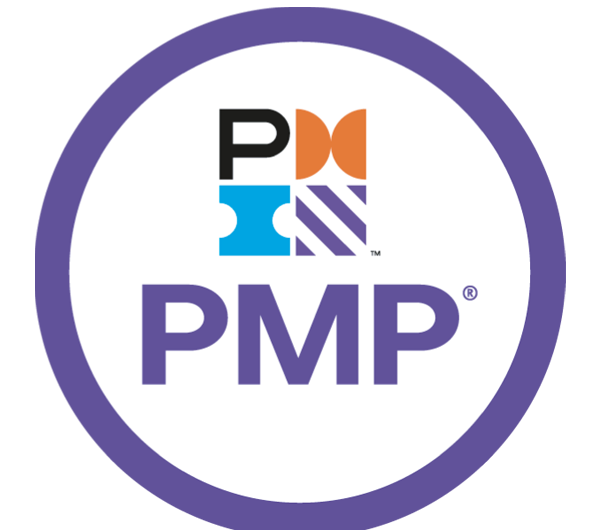Career Path Benefit: Project Management training is crucial for aspiring Project Managers. Certification in Project Management opens doors to roles such as Project Manager, Program Manager, or Project Coordinator in diverse industries, including IT, construction, and healthcare.



Module 1: Introduction to Agile and Scrum
- 1.1 Overview of Agile Principles
- Agile Manifesto and its values
- Principles of Agile development
- 1.2 Introduction to Scrum
- Scrum framework basics
- Roles and responsibilities in Scrum
- Scrum ceremonies and artifacts
Module 2: Scrum Roles and Responsibilities
- 2.1 Scrum Master Role
- Responsibilities and characteristics
- Servant leadership in Scrum
- 2.2 Product Owner Role
- Responsibilities and collaboration with the team
- Product backlog management
- 2.3 Development Team Role
- Cross-functional and self-organizing teams
- Team dynamics and collaboration
Module 3: Scrum Events
- 3.1 Sprint Planning
- Planning meeting structure and objectives
- Estimation techniques
- 3.2 Daily Scrum
- Purpose and benefits
- Facilitation and communication in daily stand-ups
- 3.3 Sprint Review
- Reviewing and adapting the product increment
- Gathering feedback and collaboration
- 3.4 Sprint Retrospective
- Reflecting on the sprint
- Continuous improvement and action items
Module 4: Scrum Artifacts
- 4.1 Product Backlog
- Prioritization techniques
- Refinement and management
- 4.2 Sprint Backlog
- Creating and managing the sprint backlog
- Definition of Done (DoD)
- 4.3 Increment
- Definition of Increment
- Transparency and visibility
Module 5: Agile Estimation and Planning
- 5.1 User Stories and Story Points
- Writing effective user stories
- Estimation using story points
- 5.2 Planning Poker
- Collaborative estimation technique
- Benefits and best practices
Module 6: Monitoring and Reporting
- 6.1 Burndown Charts
- Tracking progress and predicting completion
- Interpretation and use in decision-making
- 6.2 Velocity
- Measuring team performance
- Factors influencing velocity
Module 7: Scaling Scrum
- 7.1 Introduction to Scaling Frameworks
- Scrum of Scrums
- LeSS, SAFe, and other scaling frameworks
- 7.2 Challenges in Scaling
- Coordination and communication
- Organizational changes
Module 8: Agile Leadership and Culture
- 8.1 Agile Leadership
- Characteristics of Agile leaders
- Leading in complex environments
- 8.2 Building an Agile Culture
- Creating a culture of continuous improvement
- Embracing change and innovation
Module 9: Exam Preparation and Mock Exam
- 9.1 Scrum Master Certification Exam Overview
- Format, structure, and scoring
- Tips for success
- 9.2 Mock Exam
- Practice questions and discussion
- Feedback and clarification
Module 10: Case Studies and Real-World Application
- 10.1 Case Studies
- Real-world examples of successful Scrum implementations
- Lessons learned and best practices
- 10.2 Applying Scrum in Different Contexts
- Scrum in various industries and project types
- Adapting Scrum to specific organizational needs
Additional Resources and Wrap-Up
- Additional Reading and Resources
- Recommended books, articles, and online resources
- Communities and forums for ongoing learning
- Course Review and Q&A
- Recap of key concepts
- Open floor for participant questions and discussions
Certified Scrum Product Owner (CSPO)
Module 1: Introduction to Agile and Scrum
- 1.1 Overview of Agile Principles
- Agile Manifesto and its values
- Principles of Agile development
- 1.2 Introduction to Scrum
- Scrum framework basics
- Roles and responsibilities in Scrum
- Scrum ceremonies and artifacts
Module 2: The Role of the Product Owner
- 2.1 Product Owner Responsibilities
- Defining and prioritizing the product backlog
- Collaboration with the Scrum Team and stakeholders
- Empowering the team and making decisions
- 2.2 Characteristics of a Great Product Owner
- Vision and strategy for the product
- Communication and collaboration skills
- Balancing short-term and long-term goals
Module 3: Product Backlog Management
- 3.1 Creating and Refining User Stories
- Writing effective user stories
- Acceptance criteria and INVEST model
- 3.2 Prioritization Techniques
- MoSCoW method
- Value-driven prioritization
Module 4: Release Planning
- 4.1 Understanding Release Planning
- Setting release goals and objectives
- Creating a release plan
- 4.2 Roadmap Development
- Creating and communicating a product roadmap
- Adapting to changing priorities
Module 5: Stakeholder Management
- 5.1 Identifying and Engaging Stakeholders
- Understanding stakeholder needs
- Effective communication strategies
- 5.2 Gathering and Managing Feedback
- Feedback loops in Scrum
- Incorporating feedback into the product backlog
Module 6: Collaboration with the Development Team
- 6.1 Partnership with the Scrum Team
- Collaborative decision-making
- Empowering the team to deliver value
- 6.2 Sprint Review
- Engaging with the team during the review
- Demonstrating and validating the product increment
Module 7: Agile Metrics for Product Owners
- 7.1 Key Agile Metrics
- Velocity, lead time, and cycle time
- Using metrics to improve decision-making
- 7.2 Monitoring Progress
- Visualizing work and progress
- Adapting plans based on data
Module 8: Handling Changes and Challenges
- 8.1 Embracing Change in Agile
- Responding to changing requirements
- Continuous improvement and adaptation
- 8.2 Handling Challenges and Obstacles
- Resolving conflicts and impediments
- Learning from failures and successes
Module 9: CSPO Exam Preparation and Mock Exam
- 9.1 CSPO Exam Overview
- Format, structure, and scoring
- Tips for success
- 9.2 Mock Exam
- Practice questions and discussion
- Feedback and clarification
Module 10: Case Studies and Real-World Application
- 10.1 Case Studies
- Real-world examples of successful product ownership
- Lessons learned and best practices
- 10.2 Applying Scrum in Different Contexts
- CSPO in various industries and project types
- Adapting CSPO practices to specific organizational needs
Additional Resources and Wrap-Up
- Additional Reading and Resources
- Recommended books, articles, and online resources
- Communities and forums for ongoing learning
- Course Review and Q&A
- Recap of key concepts
- Open floor for participant questions and discussions




























































































